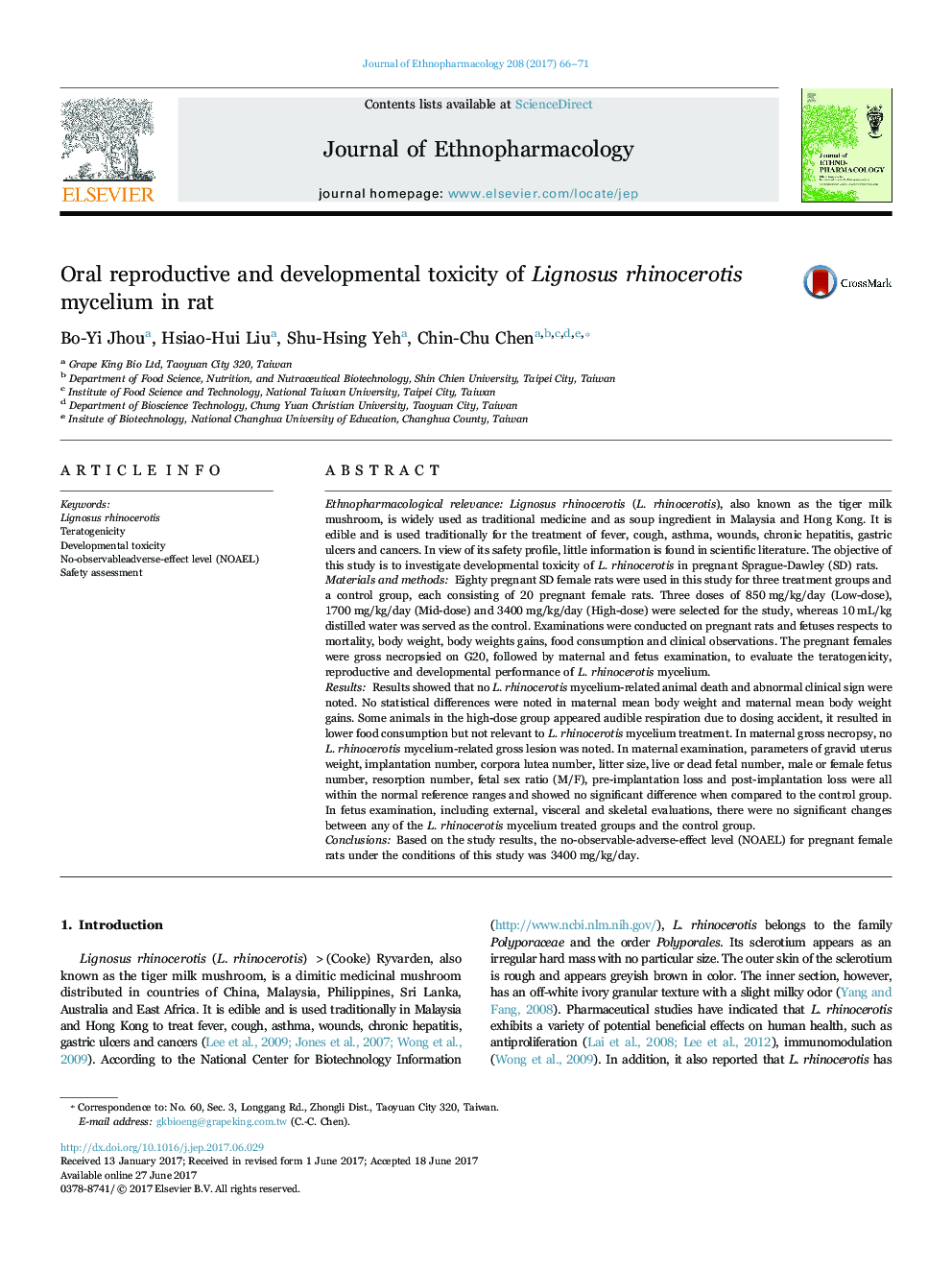| کد مقاله | کد نشریه | سال انتشار | مقاله انگلیسی | نسخه تمام متن |
|---|---|---|---|---|
| 5556012 | 1560354 | 2017 | 6 صفحه PDF | دانلود رایگان |
Ethnopharmacological relevanceLignosus rhinocerotis (L. rhinocerotis), also known as the tiger milk mushroom, is widely used as traditional medicine and as soup ingredient in Malaysia and Hong Kong. It is edible and is used traditionally for the treatment of fever, cough, asthma, wounds, chronic hepatitis, gastric ulcers and cancers. In view of its safety profile, little information is found in scientific literature. The objective of this study is to investigate developmental toxicity of L. rhinocerotis in pregnant Sprague-Dawley (SD) rats.Materials and methodsEighty pregnant SD female rats were used in this study for three treatment groups and a control group, each consisting of 20 pregnant female rats. Three doses of 850Â mg/kg/day (Low-dose), 1700Â mg/kg/day (Mid-dose) and 3400Â mg/kg/day (High-dose) were selected for the study, whereas 10Â mL/kg distilled water was served as the control. Examinations were conducted on pregnant rats and fetuses respects to mortality, body weight, body weights gains, food consumption and clinical observations. The pregnant females were gross necropsied on G20, followed by maternal and fetus examination, to evaluate the teratogenicity, reproductive and developmental performance of L. rhinocerotis mycelium.ResultsResults showed that no L. rhinocerotis mycelium-related animal death and abnormal clinical sign were noted. No statistical differences were noted in maternal mean body weight and maternal mean body weight gains. Some animals in the high-dose group appeared audible respiration due to dosing accident, it resulted in lower food consumption but not relevant to L. rhinocerotis mycelium treatment. In maternal gross necropsy, no L. rhinocerotis mycelium-related gross lesion was noted. In maternal examination, parameters of gravid uterus weight, implantation number, corpora lutea number, litter size, live or dead fetal number, male or female fetus number, resorption number, fetal sex ratio (M/F), pre-implantation loss and post-implantation loss were all within the normal reference ranges and showed no significant difference when compared to the control group. In fetus examination, including external, visceral and skeletal evaluations, there were no significant changes between any of the L. rhinocerotis mycelium treated groups and the control group.ConclusionsBased on the study results, the no-observable-adverse-effect level (NOAEL) for pregnant female rats under the conditions of this study was 3400Â mg/kg/day.
Rats gavaged up to 3400Â mg/kg of Lignosus rhinocerotis (L. rhinocerotis) mycelium does not cause either toxicity in dams or teratogenicity in fetal development. L. rhinocerotis mycelium possess safety and quality as a functional additional ingredient in food for pregnant females and their offspring.156
Journal: Journal of Ethnopharmacology - Volume 208, 17 August 2017, Pages 66-71
